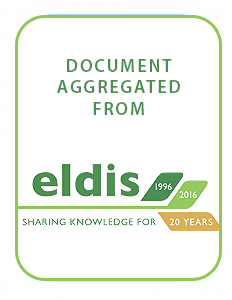This publication is the result of a significant commitment by numerous individuals over the past two years. In particular, the Forestry Policy and Institutions Branch (FONP) of FAO has provided extensive support to the development and production of these conflict management cases.
La Conferencia Internacional sobre la Contribución de los Criterios e Indicadores para la Ordenación Forestal Sostenible: El camino a seguir (CICI - 2003) fue organizada por el Instituto Nacional de Bosques (INAB) de Guatemala en la ciudad de Guatemala, del 3 al 7 de febrero de 2003, con el…
Invasive tree species are now considered to be a threat to the biological diversity of Southern Africa. Most of the invasive tree species in Southern Africa were either deliberate or accidental introductions. Most of the invasive tree species are exotic, with only one or two being indigenous.…
La Conférence internationale sur la contribution des critères et indicateurs de la gestion forestière durable: Perspectives d'avenir (CICI - 2003) a été accueillie par les Services forestiers nationaux du Guatemala (Instituto Nacional de Bosques, INAB) à Guatemala City du 3 au 7 février…
The FAO Inland Water Resources and Aquaculture Service (FIRI) has been active in promoting the use of geographic information systems (GIS) and remote sensing in fisheries and aquaculture since 1985. However, a manual to use along with GIS software for the fisheries biologists in the field…
La présente loi autorise la ratification de la réglementation commune aux Etats membres du CILSS sur l’homologation des pesticides, révisée et adoptée par le Conseil des Ministres du CILSS, le 16 décembre 1999 à N’Djaména (Tchad), dont le but est de mettre en commun (dans un cadre sous-régional…
This publication comes out of the Gender, Citizenship and Governance programme of the Royal Tropical Institute (KIT), Netherlands. The project aimed to develop good practice in changing governance institutions to promote gender equality, enhance citizen participation and build accountability of…
An executive summary and recommendations are followed by 5 chapters: on the land question, reform and farm workers; the scope and process of fast track reform; the impact of land reform on farm workers’ livelihoods; food security, vulnerable groups, HIV-AIDS and coping strategies; and after the…
Presents two personal testimonies of eviction and dispossession to illustrate the long and complex political history of land in Zimbabwe. The first concerns the eviction of white commercial farmers from one district in December 2002, the second of black peasant farmers in 1948, to make way for…
"The paper examines, taking into account the urban-rural divides, the changes and welfare implications of income diversification in Zimbabwe following macroeconomic policy changes and droughts of the early 1990s. Data from two comparable national income, consumption, and expenditure surveys…
This paper represents a provisional attempt to assess whether Zimbabwe’s land reform coherently addresses the issue of poverty reduction. It examines the short-term outcome(s) of the reform programme in relation to its initial objectives. More specifically, it examines its impact on farm-workers…
This paper explores the dualities in the coexistence within Zimbabwean politics of constitutionalism and legality versus a complex combination of paralegal, supralegal, oppressive and brutal political action, especially as this pertains to elections and land. The analysis is set in the period…





